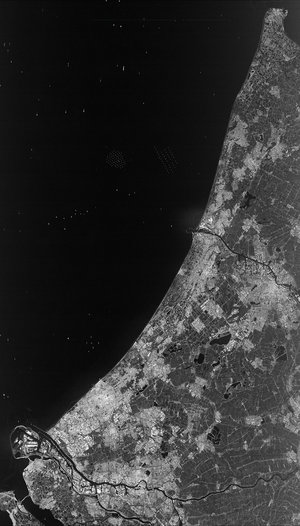

WaddenSAR campaign aircraft
An important milestone in the development of ESA’s tenth Earth Explorer satellite mission, Harmony, has been reached thanks to two aircraft flying in tight formation over the Dutch Wadden Islands collecting key data on sea state and currents. The main purpose of this tricky airborne experiment, called WaddenSAR, is to mimic the geometry at which the Harmony satellites will measure various aspects of ocean dynamics to understand how air and the ocean surface interact, which, in turn, will improve weather prediction and climate models.
The Harmony concept would comprise two identical satellites orbiting in convoy with a Copernicus Sentinel-1 radar satellite. Each Harmony satellite is being designed to carry a receive-only synthetic aperture radar as its main instrument.
Each of the campaign aircraft, pictured here, carried a C-band synthetic aperture radar from MetaSensing Radar Solutions. To simulate the transmit–receive arrangement between Sentinel-1 and Harmony, one of the aircraft’s instruments could emit and receive radar signals to and from the sea surface, and one was a receive-only instrument.
Read full story: Harmony in the Wadden





